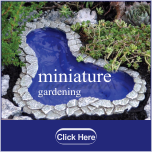 Beneficial insects are insects, which can be attracted to garden, which kill harmful insects or their larvae. There are many different species for different problems.
Beneficial insects are insects, which can be attracted to garden, which kill harmful insects or their larvae. There are many different species for different problems.
- Brachonids, Chalcids and Ichneumon Wasps
These small beneficial insects kill leaf-eating caterpillars. They can be attracted to garden by planting carrots, celery, parsley, caraway, and Queen Anne’s lace, all members of the Umbelliferae family. - Ladybugs
These common insects swallows aphids, mites, whiteflies, and scale. They can be attracted to garden by planting members of the daisy family (Compositae), tansy, or yarrow. - Lacewings
Lacewings are intense consumers of aphids, and their larvae eat aphids and other varieties of insect pests. They are generally attracted by “composite” flowers, like yarrow, goldenrod, black-eyed susan’s and asters. - Hover-flies
Hover-flies are intense consumers of aphids and the larva of hover-flies eats aphids and other insect pests. Like the Lacewings, they are attracted to “composite” flowers, such as yarrow, goldenrod, black-eyed susan’s and asters. Seeds for these flowers are available online, or at most garden centers.  Praying Mantis
Praying Mantis
These large insects have hunger for many garden pests. Praying mantis eggs are deployed in the garden where they hatch and rapidly grow to adult size.
- Nematodes
Nematodes are also effective against beetles, cutworms, and root weevil larvae. Nematodes do not cause harm to humans and pets. Nematode eggs are microscopic (very small) and is available in the form of a small sponge which has million of eggs. These are combined with water and applied to the soil, where they hatch and work.
‘Mini – Insectary’ garden can also be established nearby to a small garden plot of flowering plants designed to attract and withhold beneficial insects.